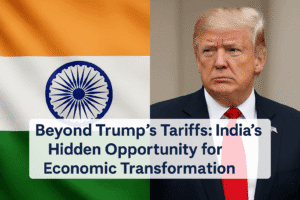Beyond the Headlines: Starlink’s India Debut – A Bridge for Rural Gaps, Not an Urban Revolution
Starlink is poised to launch premium satellite internet in India, targeting critical connectivity gaps rather than mass urban adoption. With an upfront hardware cost around ₹33,000 and monthly fees between ₹3,000-₹4,200, its pricing positions it as a specialized solution. Service will be intentionally limited to 200,000 users initially, prioritizing remote and rural areas where traditional broadband fails. Speeds of 25-220 Mbps offer a lifeline for these underserved communities, enabling essential services like education and telemedicine.

Strategic partnerships with Airtel and Jio for hardware distribution demonstrate a complementary approach, avoiding direct clashes with existing telecom giants. Future satellite upgrades promise significantly faster speeds, but Starlink’s immediate value lies in bridging India’s persistent digital divide. Its success hinges not on subscriber volume, but on empowering regions long excluded from reliable internet access. This launch represents a targeted effort to deliver connectivity where infrastructure cannot reach, transforming opportunity for India’s hardest-to-connect populations.
Beyond the Headlines: Starlink’s India Debut – A Bridge for Rural Gaps, Not an Urban Revolution
The long-anticipated arrival of Starlink’s satellite internet in India is finally taking concrete shape, revealing a service poised to address critical connectivity deserts rather than disrupt the mainstream market. Here’s a deeper look beyond the pricing and speed figures:
The Core Offering: Premium Access for Underserved Areas
- Price Point: Confirmed by Minister Pemmasani Chandra Sekhar, Starlink enters with a significant monthly subscription (estimated ₹3,000 – ₹4,200) plus a substantial upfront hardware cost (around ₹33,000 for the dish and router). This immediately positions it as a premium service.
- Speed Spectrum: Expect speeds ranging from 25 Mbps (sufficient for basic needs) up to a potential 220 Mbps. This is notably lower than urban fiber offerings but represents a massive leap for locations with unreliable or non-existent broadband.
- Limited Rollout: Intentional scarcity is part of the plan. Service will be capped at 200,000 (20 lakh) users nationwide initially. This controlled launch focuses on validating the network and targeting the most critical need areas.
Strategic Positioning: Filling Voids, Not Fighting Giants
The government and industry view Starlink not as a direct competitor to Jio, Airtel, or BSNL in cities and towns, but as a complementary force. Its true value proposition shines in:
- Remote & Rural India: Where laying fiber is prohibitively expensive or geographically challenging. Starlink offers a potentially life-changing “digital lifeline” for education, healthcare access, and economic activity in these regions.
- Temporary Sites & Mobility: Construction projects, research stations, or disaster recovery zones needing rapid, reliable connectivity could benefit significantly.
The Entry Strategy: Partnerships Over Conquest
Starlink demonstrates savvy market entry tactics:
- Infrastructure Sharing: Partnerships with established giants Airtel and Jio for hardware distribution leverage their vast networks and customer trust, avoiding massive standalone setup costs.
- Niche Focus: Explicitly targeting areas underserved by terrestrial networks minimizes direct conflict with incumbents who dominate urban centers.
- Government Alignment: Positioning as a solution for national connectivity goals (like BharatNet) builds goodwill and facilitates regulatory approval.
The Future Horizon: Speed Upgrades on the Way
While initial speeds are modest, Starlink’s roadmap is ambitious. The next generation of satellites, slated for deployment starting in 2026, promises over 1,000 Gbps capacity per satellite. This could eventually increase speeds up to 10x current levels, significantly enhancing the service’s capability, especially in high-demand or enterprise scenarios.
The Realistic Take: Who is Starlink For (Initially)?
- Rural Households & Businesses: Those with no viable alternatives, for whom reliable internet unlocks essential services and opportunities, justifying the premium cost.
- Professionals in Remote Locations: Individuals like doctors, engineers, or educators working in underserved areas needing stable connectivity.
- Specialized Use Cases: Government projects, NGOs, disaster management, maritime, or temporary sites requiring quick deployment.
- Not Urban/Suburban Mainstream: Given the cost and comparable (or better) speeds offered by fiber/cable at lower prices, Starlink isn’t positioned to attract typical city dwellers en masse right now.
The Value Proposition: Connectivity as Empowerment
Starlink’s launch isn’t just about adding another ISP. Its core value lies in:
- Bridging the Digital Chasm: Offering a viable, high-speed option where traditional infrastructure fails.
- Enabling Opportunity: Facilitating access to online education, telemedicine, e-commerce, and government services for millions previously excluded.
- Enhancing Resilience: Providing critical backup or primary connectivity during natural disasters or in geographically isolated areas.
Conclusion: A Targeted Lifeline, Not a Mass Market Tsunami
Starlink’s India debut, with its premium pricing, user cap, and rural focus, is a calculated move. It’s less about challenging Jio or Airtel on their home turf and more about illuminating India’s darkest connectivity corners. The initial impact will be profound for specific, underserved communities, offering a level of internet access previously unimaginable. While future speed boosts are promising, Starlink’s immediate role is clear: to be a crucial, specialized bridge across India’s persistent digital divide, proving that sometimes, the internet truly does need to fall from the sky. Its success will be measured not in subscriber counts matching telecom giants, but in the lives and economies it empowers in the places others cannot reach.
You must be logged in to post a comment.